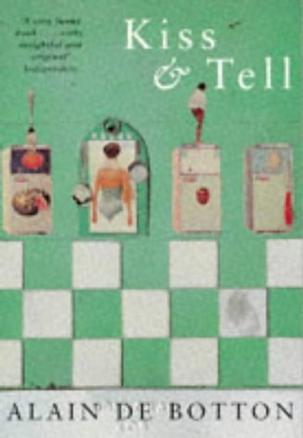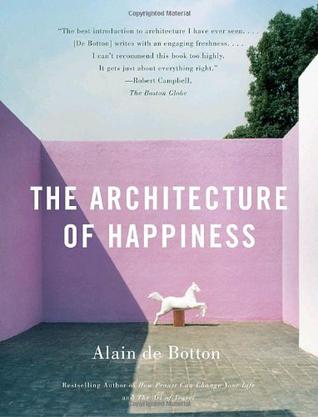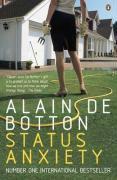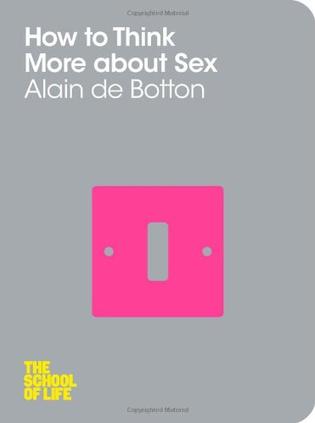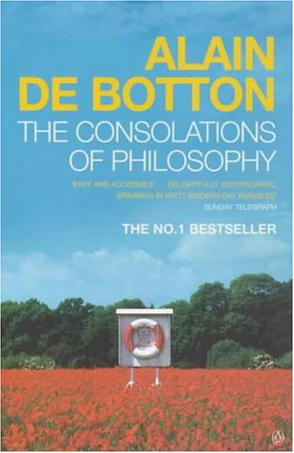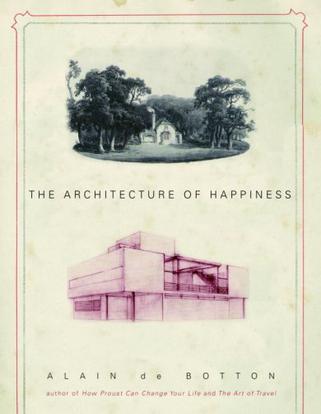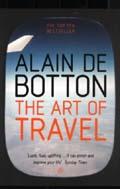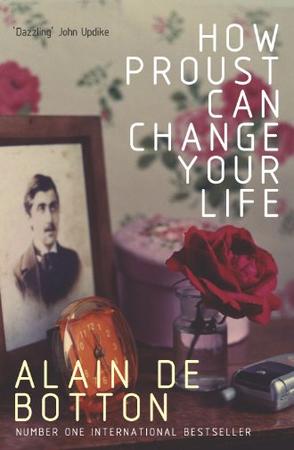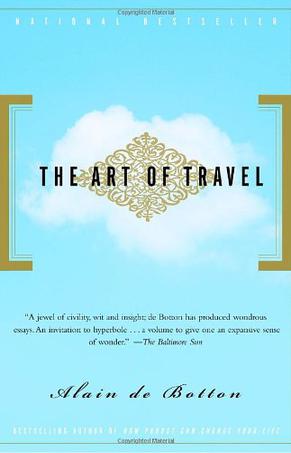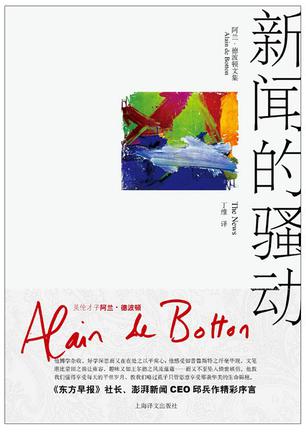欢迎来到相识电子书!
标签:阿兰·德波顿
-
藝術的慰藉
完全顛覆過去的藝術解說方式 重視藝術對人類的治癒功能 英國最具特色的才子作家、哲學家、製作人──艾倫‧狄波頓 出道以來最具個人特色的新作! 重新解讀藝術對現代人的最大貢獻和價值: 是心靈與精神的慰藉! 我們都知道藝術很重要──它是崇高的、優雅的、貼近人性的、有教育義意的、尊貴的、甚至高價的。 評論家們熱切地討論它,教育家們致力於推廣它,藝術家們透過近乎玄妙的方式創作它,一般民眾戰戰兢兢地接近它,而附庸風雅的有錢人們,則競相追逐它。 而在這一切華美崇高的外表下,有一個最根本的問題,沒有人真的知道答案,也沒有人敢問,因為這問題一出口,必然引起眾人倒抽一口涼氣…… 「呃,所以,藝術是幹嘛用的?」 還好,英國最受歡迎的才子作家艾倫‧狄波頓免除了我們的尷尬,透過這本有上百張珍貴精美彩圖的《藝術的慰藉》,為我們解答了這個關於藝術的大哉問,他說:「只要對我們具有療癒效果,就可以算是重要的藝術作品。」 通過《藝術的慰藉》,艾倫‧狄波頓認為藝術有七大功能: 1. 矯正記憶的缺陷:藝術能夠把經驗的果實變得令人難忘,而且還能不斷以新面貌重現。 2. 散播希望:藝術讓我們隨時都能看得到令人愉悅開心的事物。 3. 呈現有尊嚴的哀愁:藝術提醒我們,哀愁在美好人生中也占有一席之地,因此我們比較不會對自己遭遇的困難感到恐慌。 4. 協助我們取得平衡:藝術以異常清晰的象徵體現我們良好特性的本質,引導我們發揮自己最優秀的潛力。 5. 引導我們認識自我:藝術能夠幫助我們辨識出對我們具有核心重要性,卻又難以形諸言詞的事物。我們可以拿起藝術作品,以困惑但認真的態度說:「這就是我。」 6. 擴展我們的經驗:藝術是他人的經驗透過極度精緻的方式累積而成的結果。我們在藝術中可以找到其他文化的鮮明範例,因此親近藝術作品能夠擴展我們對自己以及世界的概念。 7. 喚醒麻木的心靈:藝術能夠剝開我們的外殼,把我們從習以為常的泥沼中拉出來,不再對自己身周的一切視而不見。 在《藝術的慰藉》一書中,艾倫‧狄波頓與約翰‧阿姆斯壯告訴我們,藝術能夠幫助我們因應個人最私密又平凡的難題:我的工作為什麼沒有為我帶來更多的滿足感?別人的人生為什麼看起來比較光鮮亮麗?我該怎麼改善我的感情關係?政治為什麼如此令人沮喪?本書為藝術的詮釋提出一種新方法:把藝術視為一種療癒方式,為人生的許多問題提出強而有力的解決方法。 國際媒體讚譽 「透過簡單易讀的內容,引領讀者對藝術家、經紀人、特別是美術館的功能提出質疑。所有對藝術有興趣的人都應該要讀一讀這本書。」 ──《丹佛郵報》 「當我讀完《藝術的慰藉》後,再重新觀看過去一直很欣賞的畫作,彷彿透過一層自我認識和自我探索的濾鏡,突然間整個都不一樣了。真是一本難得的好書。」 ──《Goop》時尚生活雜誌 「充滿了值得讓人思考玩味的議題,文筆優雅,配圖精美。」 ──《西雅圖時報》 「《藝術的慰藉》以令人耳目一新的非學院派觀點來理解藝術……顛覆了藝術領域中自我指涉的文化,更大膽讓藝術成為我們日常生活的中心。」 ──《出版家週報》 -
如何思考性這件事
請好好地,思考性這件事,因為當中就有幸福的處方 性,何以令我們深感歡愉,又備覺孤單?有了性,人注定得在愛情與慾望之間擺盪;但若沒有了性,人又會變得危險不已…… 艾倫.狄波頓從來沒讓讀者失望,這次他挑戰「性」這檔事,依然銳不可擋,好看好讀! 蔡詩萍 「我們投注在性事上的心思不會太多,只是思考的方式錯了而已。」狄波頓提出最深刻的性事觀察,協助我們探索性愛這種親密又刺激,但也經常令人困惑苦惱的體驗。 狄波頓認為,廿一世紀的性愛注定必須在愛情和慾望、偷歡與忠貞之間尋求平衡。書中大談肉慾、戀物癖、婚外情與色情,坦率指出了現代性事當中的難題,並且提出洞見與慰藉,協助我們以更深刻也更明智的方式,思考我們所擁有或沒機會擁有的性愛。 -
艺术的疗效
《旅行的艺术》、《爱上浪漫》等畅销书作家,“英伦才子”阿兰•德波顿联手艺术史家约翰•阿姆斯特朗的最新著作《艺术的疗效》,回答了“艺术为什么”的问题。 以150幅经典的绘画、建筑和设计作品,以“爱情”、“自然”、“金钱”和“政治”为章节,以阿兰式的生动、机智,娓娓讲述了艺术如何帮助人们面对困难,如何与他人建立良好的关系,寻求幸福,从而安然面对人类最终的命运。 《艺术的疗效》旨在帮助我们加深对艺术的认识,从而更深刻地认识我们自己。无论对熟知艺术的人或对艺术的初学者来说,本书都将开启一段有趣的阅读之旅。 -
Kiss and Tell
Amazon.com Alain de Botton has crafted a delightfully ingenious novel in the form of a biography of an unknown woman. Told by a former flame that he lacks empathy, the engaging narrator of Kiss & Tell decides to write a book about the next person he meets. This turns out to be Isabel Rogers, a production assistant at a London stationery company. The sincere effort of this would-be Boswell to make this ordinary woman fascinating cause him to fall in love with her, causing a shift in his writing from an examination of Isabel's life to a minutely-detailed account of his relationship with her. Alain de Botton's earlier work, The Romantic Movement, garnered praise from John Updike and Pico Iyer, who called him "a Stendhal of the 90's dating scene." --This text refers to an out of print or unavailable edition of this title. From Publishers Weekly "Dental work on," "first kiss" and "new hairstyle" can all be found under the index entries for Isabel Rogers, the charming, unsuspecting subject of this diverting fictional biography. De Botton plays a nimble game, through the eyes and idiosyncrasies of his smart, pretentious narrator. Looking for an opportunity to explore the nature of biography without being overshadowed by his subject, the narrator attaches himself to a woman he thinks will be mundane enough to be fully mastered. To play off the appealing if thoroughly normal Isabel, de Botton (The Romantic Movement) makes his narrator as fastidious as any of Nicholson Baker's and as smarmily self-absorbed as one of Martin Amis's. But the ordinary details of Isabel's ordinary life?she is 28, a production assistant in London?prove more than enough to handle, and the narrator, who likes to quote Dr. Johnson and Richard Ellman, finds that the high-brow rigors of formal biography have to make concessions to the unruliness of lived life. Inevitably in this comic relationship, the narrator digresses too often, experimenting with handwriting analysis, palmistry and psychiatric questionnaires before he realizes that he is missing a very different kind of understanding of Isabel. Deftly, de Botton manages to flesh out the character of Isabel within the parameters of what is?in every sense?his narrator's pseudo-intellectual conceit. In the manner of Carol Shield's The Stone Diaries, photos of "Isabel" and her family add a droll touch. Copyright 1996 Reed Business Information, Inc. --This text refers to an out of print or unavailable edition of this title. From Booklist After an ex-girlfriend accuses the narrator of being a narcissist, he decides to find out as much as possible about the next person he meets. Fortunately she, in the form of Isabel Jane Rogers, proves to be a woman of many layers. Intrigued by the biographer's mission, the unnamed narrator plunges into Isabel's life, creating a laundry list of minutiae--such as how she learned to make the figure 8, her first bubble bath, candies eaten as a child, and how she cleans her apartment to The Best of Blondie music--all to gain insight, reformulate prejudices, and grow empathic. Along the way, he consults other biographies for direction. An index (unusual in a fictional work) draws out details from the lives of Samuel Johnson, Marcel Proust, and James Joyce, among others. Readers who enjoy biographies must not miss Kiss & Tell. It provides insight into the genre while also presenting bit by nonchronological bit the ordinary albeit captivating life of Isabel Jane Rogers. Jennifer Henderson --This text refers to an out of print or unavailable edition of this title. From Kirkus Reviews A young, self-centered British swain vows to get to know the next woman he meets better than she knows herself, in de Botton's self-consciously coy follow-up to On Love (1993) and The Romantic Movement (1995). ``It took me a long time to . . . understand how someone could have been so un-self-aware and at the same time so self-obsessed,'' reads the narrator's most recent Dear John letter. ``You said you loved me, but a narcissist can't love anyone but himself.'' Miffed by the accusation, de Botton's intellectual hero determines not just to pay more attention to the next woman he meets but to immerse himself in her life as assiduously as a biographer studies his subject. Ordinary as that randomly picked woman turns out to be--pretty, 25-year-old Isabel Rogers is a production assistant for a stationery company--our hero earnestly commits to paper every thought she expresses, every casual mannerism, every minor anecdote about her childhood, in the hopes of proving himself worthy of love. At first, Isabel is flattered by such attention, though she wisely attributes her biographer's attentions to ordinary lust. As the months pass and the narrator charts Isabel's ancestral tree, challenges her with personality quizzes, and gravely ponders such inscrutable utterances as ``I know I should read more, but TV is easier. I should love people who are nice to me, but grumps are more of a challenge . . . I want to have babies, but I'm frightened of becoming my mother,'' he increasingly gets on her nerves- -proving, inevitably, that too much attention can be as irritating as too little. ``And I think we should stop seeing one another as well,'' Isabel continues. ``But unfortunately I can't be sure about that either. I don't know any more, all right?'' Having stuck with this one-joke plot that is, like its narrator, amusing and tedious by turns, readers will understand her fond impatience all too well. -- Copyright ©1996, Kirkus Associates, LP. All rights reserved. --This text refers to an out of print or unavailable edition of this title. Review "Original, intelligent, and beguiling . . . You will get more than pure pleasure from reading...you may never again look at biography in quite the same way."—Jonathan Yardley, The Washington Post Book World "This ingenious, and even wise, novel elicits an almost continuous smile."—The New Yorker "An impressively ambitious book . . . More than just an offbeat romantic comedy--it's a provocative meditation on the essence of personality and the nature of the biographer's task."—Michael Upchurch, The San Francisco Chronicle "Playful and adroit...a sometimes essayistic, often funny meditation on biographical form which has at its root universal and problematic questions of how we know ourselves, and how we begin to understand others."—Sara Kramer, Boston Review "Shows ingenuity. De Botton makes some witty and arch observations about the twentysomething English generation and its culture. Isabel may be alarmingly ordinary, but in his hands she is also fascinating."—Greg Morago, The Hartford Courant "Engaging and delightful...Such a writer could write the biography of a broomstick, as Dr. Johnson suggested, and it would come alive under his pen."—Philip Glazebrook, The Spectator "Rich, intelligent, and finely written...Alain De Botton provides not merely an engaging suburban love story, but a lip-smackingly irreverent take on the entire biographical genre."—Paul Sussman, The Independent on Sunday "Brilliantly erudite and amusing...De Botton is the boy wonder of contemporary English literature. What gives his novels their considerable charm is his winning combination of candor and intellect."—The Tatler "Genuinely funny...perceptive...cheerfully wrought...De Botton's prose is an arm wrestle of erudition with popular culture...His writing is endearing, not in the least remote, and attempts to return value and sophistication to a currency--the ever-Austenesque minuet of courtship and love."—Rachel Cusk, The Times up0 "Happy . . . clever debunking of biographical objectivity."—James Atlas, Vogue Review "Original, intelligent, and beguiling . . . You will get more than pure pleasure from reading...you may never again look at biography in quite the same way."—Jonathan Yardley, The Washington Post Book World "This ingenious, and even wise, novel elicits an almost continuous smile."—The New Yorker "An impressively ambitious book . . . More than just an offbeat romantic comedy--it's a provocative meditation on the essence of personality and the nature of the biographer's task."—Michael Upchurch, The San Francisco Chronicle "Playful and adroit...a sometimes essayistic, often funny meditation on biographical form which has at its root universal and problematic questions of how we know ourselves, and how we begin to understand others."—Sara Kramer, Boston Review "Shows ingenuity. De Botton makes some witty and arch observations about the twentysomething English generation and its culture. Isabel may be alarmingly ordinary, but in his hands she is also fascinating."—Greg Morago, The Hartford Courant "Engaging and delightful...Such a writer could write the biography of a broomstick, as Dr. Johnson suggested, and it would come alive under his pen."—Philip Glazebrook, The Spectator "Rich, intelligent, and finely written...Alain De Botton provides not merely an engaging suburban love story, but a lip-smackingly irreverent take on the entire biographical genre."—Paul Sussman, The Independent on Sunday "Brilliantly erudite and amusing...De Botton is the boy wonder of contemporary English literature. What gives his novels their considerable charm is his winning combination of candor and intellect."—The Tatler "Genuinely funny...perceptive...cheerfully wrought...De Botton's prose is an arm wrestle of erudition with popular culture...His writing is endearing, not in the least remote, and attempts to return value and sophistication to a currency--the ever-Austenesque minuet of courtship and love."—Rachel Cusk, The Times "Happy . . . clever debunking of biographical objectivity."—James Atlas, Vogue Product Description Dr. Samuel Johnson observed that everyone's life is a subject worthy of the biographer's art. Accused by a former girlfriend of being unable to empathize, the narrator of Kiss & Tell takes Johnson's idea to heart and decides to write about the next person who walks into his life. He meets Isabel Rogers, a production assistant at a small stationery company in London, apparently an ordinary woman. But as the biographer's understanding of Isabel deepens, she becomes remarkable. Her smallest quirks, private habits, and opinions become worthy of the most painstaking investigation—and unexpectedly attractive to her biographer. -
The Architecture of Happiness
From Publishers Weekly With this entertaining and stimulating book, de Botton (How Proust Can Change Your Life) examines the ways architecture speaks to us, evoking associations that, if we are alive to them, can put us in touch with our true selves and influence how we conduct our lives. Because of this, he contends, it's the architect's task to design buildings that contribute to happiness by embodying ennobling values. While he makes no claim to be able to define true beauty in architecture, he suggests some of the virtues a building should have (illustrated by pictures on almost every spread): order combined with complexity; balance between contrasting elements; elegance that appears effortless; a coherent relationship among the parts; and self-knowledge, which entails an understanding of human psychology, something that architects all too often overlook. To underscore his argument, de Botton includes many apt examples of buildings that either incorporate or ignore these qualities, discussing them in ways that make obvious their virtues or failings. The strength of his book is that it encourages us to open our eyes and really look at the buildings in which we live and work. A three-part series of the same title will air on PBS this fall. (Oct. 3) Copyright © Reed Business Information, a division of Reed Elsevier Inc. All rights reserved. --This text refers to the Hardcover edition. From The Washington Post's Book World/washingtonpost.com While happily reading Alain de Botton's graceful musings about architectural beauty, I was suddenly struck by the photograph of the Edgar J. Kaufmann House in Palm Springs, Calif., designed by Richard Neutra in 1946. I turned the page to see what de Botton had to say about it: "The bourgeois couples who lived in Richard Neutra's mid-twentieth-century steel and glass pavilions in California may at times have drunk too much, squabbled, been insincere and overwhelmed by anxiety, but at least their buildings spoke to them of honesty and ease, of a lack of inhibition and a faith in the future." That was all. Odd, I thought. De Botton never points out that this same Edgar J. Kaufmann commissioned the most beautiful private home in America, Fallingwater. He was. Nor, I discovered after checking the index, does he mention its architect, a certain Frank Lloyd Wright. Not once. There's no obvious reason why the author of How Proust Can Save Your Life and The Consolation of Philosophy should leave out Wright. Perhaps he simply decided to challenge himself, to see if he could manage the trick, just as the French novelist Georges Perec once published a perfectly readable novel in which none of the words contain the letter E. Certainly, de Botton otherwise reveals his usual wide learning, lyrically deployed. He discusses the neoclassical influence of Palladio, the impact of Horace Walpole's Gothic extravaganza Strawberry Hill on 19th-century building in Britain, the austere concrete housing of Le Corbusier (who once dubbed his sterile tenements "machines for living"). But mysteriously, almost tantalizingly, he avoids the vastly influential, world-famous Wright, whose houses are so serenely beautiful to look at and yet almost impossible to live in comfortably -- at least if you slouch, have children or collect anything. Not surprisingly, The Architecture of Happiness is itself a carefully designed book, tightly constructed around the photographs that appear on virtually every other page. (Another mystery: Which came first, the images or the text?) There are pictures of castles, cathedrals, office buildings, private homes, bridges, hallways, windows, chairs, ironwork. De Botton visits a theme park in Japan built to resemble 17th-century Amsterdam, shows us a 30-foot-high obelisk memorializing a beloved pig, interprets the monumental elegance of the Royal Crescent in Bath, and discusses both the early modern pursuit of functionality and the ancient Japanese esthetic of wabi, which "identified beauty with unpretentious, simple, unfinished, transient things." Throughout, de Botton argues that the buildings we walk by, work in or come home to affect how we feel. They influence our mood, our sensibility, our very character. No one is likely to disagree with this, especially those of us who dispiritedly sink down into our windowless office cubicles day after day or vainly yearn for just one room, let alone an entire house, like those in Architectural Digest. Alas, much of the time we must simply accept what we are given or settle for what we can afford. For at no point does de Botton seriously address the economics of architecture and interior design. Even if you do it yourself, construction of any kind, especially the highly individualized, is almost prohibitively expensive. This reality, however, doesn't undercut de Botton's essential point: "Buildings speak -- and on topics which can readily be discerned. They speak of democracy or aristocracy, openness or arrogance, welcome or threat, a sympathy for the future or a hankering for the past." In short, "they speak of visions of happiness." De Botton attempts to understand aspects of that happiness by touching on the achievements or failures of particular styles and constructions. He offers us, in effect, a handsome photo album printed on coated stock, augmented by thoughtful, highly polished paragraphs and pensées. Time after time, his descriptions neatly capture the distinctiveness and character of even the most unusual buildings. Admittedly, those who prefer their sentences strictly functional may sometimes judge de Botton's a tad lyrical, just as his mini-essays risk sounding a little gushy. For the most part, though, he keeps his balance, largely through his quiet intelligence, passionate conviction and the charm of a personality lightly tinged with melancholy: "The failure of architects to create congenial environments mirrors our inability to find happiness in other areas of our lives. Bad architecture is in the end as much a failure of psychology as of design. It is an example expressed through materials of the same tendency which in other domains will lead us to marry the wrong people, choose inappropriate jobs and book unsuccessful holidays: the tendency not to understand who we are and what will satisfy us. "In architecture, as in so much else, we cast around for explanations to our troubles and fix on platitudinous targets. We get angry when we should realize we are sad and tear down ancient streets when we ought instead to introduce proper sanitation and street lights. We learn the wrong lessons from our griefs while grasping in vain for the origins of contentment. "The places we call beautiful are, by contrast, the work of those rare architects with the humility to interrogate themselves adequately about their desires and the tenacity to translate their fleeting apprehensions of joy into logical plans -- a combination that enables them to create environments that satisfy needs we never consciously knew we even had." De Botton concludes his book with an even more heartfelt plea: We must strive to build in a manner worthy of the meadows and woods we are destroying. "We owe it to the fields that our houses will not be inferiors of the virgin land they have replaced. We owe it to the worms and the trees that the buildings we cover them with will stand as promises of the highest and most intelligent kind of happiness." Copyright 2006, The Washington Post. All Rights Reserved. --This text refers to the Hardcover edition. From Bookmarks Magazine Alain De Botton, author of How Proust Can Change Your Life, The Art of Travel, and Status Anxiety, among other books, takes a humanistic approach in Architecture of Happiness and explores the ways in which our built environment affects us. He occasionally overindulges in florid prose, but critics agree that his more general observations of architecture are sound and interesting, if not entirely novel. The average reader will find much of interest in the broad range of eras, places, and styles that de Botton discusses. Well-placed photographs illustrate each point in the text. The book is so visual, in fact, that the BBC is making a three-part television series based on it, to air on PBS this fall. Copyright © 2004 Phillips & Nelson Media, Inc. --This text refers to the Hardcover edition. Review “De Botton has a marvelous knack for coming at weighty subjects from entertainingly eccentric angles.” —The Seattle Times "An elegant book. . . . Unusual . . . full of big ideas. . . . Seldom has there been a more sensitive marriage of words and images." —The New York Sun "With originality, verve, and wit, de Botton explains how we find reflections of our own values in the edifices we make. . . . Altogether satisfying." —San Francisco Chronicle "De Botton is high falutin' but user friendly. . . . He keeps architecture on a human level." —Los Angeles Times Product Description The Achitecture of Happiness is a dazzling and generously illustrated journey through the philosophy and psychology of architecture and the indelible connection between our identities and our locations. One of the great but often unmentioned causes of both happiness and misery is the quality of our environment: the kinds of walls, chairs, buildings, and streets that surround us. And yet a concern for architecture is too often described as frivolous, even self-indulgent. Alain de Botton starts from the idea that where we are heavily influences who we can be, and argues that it is architecture's task to stand as an eloquent reminder of our full potential. -
Status Anxiety
We all worry about what others think of us. We all long to succeed and fear failure. We all suffer --- to a greater or lesser degree, usually privately and with embarassment --- from status anxiety. For the first time, Alain de Botton gives a name to this universal condition and sets out to investigate both its origins and possible solutions. He looks at history, philosophy, economics, art and politics --- and reveals the many ingenious ways that great minds have overcome their worries. The result is a book that is not only entertaining and thought-provoking --- but genuinely wise and helpful as well. -
亲吻与诉说
偌大的伦敦城,他和她,本来只是两个渺小得几乎没有可能相交的点。他突发奇想,想白描一个偶然邂逅的普通女子的人生,完成一部前无古人的传记。她渴望倾诉,愿意成人之美,任他拿一枚放大镜一寸一寸地洞察自己的悲欢。原来,再琐碎的生活里也有惊心动魄,再激烈的情感到头来也只会愈嚼愈淡。凡人传记?爱情故事?人生漫谈? 读阿兰•德波顿的小说《亲吻与诉说》,总是匪夷所思地被他触到了痒穴和痛处,眼前却是一张,没有表情的脸。 如约翰生博士所言,德波顿是那种可以为扫帚作传的作家,在他的笔下,扫帚也是活的。 ——《观察家》 通过其独具魅力的写作艺术,德波顿探索了人类由于无法相互理解而产生的悲喜剧,让我们对自己不再那么陌生。——《星期日泰晤士报》 -
Status Anxiety
Anyone who’s ever lost sleep over an unreturned phone call or the neighbor’s Lexus had better read Alain de Botton’s irresistibly clear-headed new book, immediately. For in its pages, a master explicator of our civilization and its discontents turns his attention to the insatiable quest for status, a quest that has less to do with material comfort than with love. To demonstrate his thesis, de Botton ranges through Western history and thought from St. Augustine to Andrew Carnegie and Machiavelli to Anthony Robbins. Whether it’s assessing the class-consciousness of Christianity or the convulsions of consumer capitalism, dueling or home-furnishing, Status Anxiety is infallibly entertaining. And when it examines the virtues of informed misanthropy, art appreciation, or walking a lobster on a leash, it is not only wise but helpful. -
The Architecture of Happiness
From Publishers Weekly With this entertaining and stimulating book, de Botton (How Proust Can Change Your Life) examines the ways architecture speaks to us, evoking associations that, if we are alive to them, can put us in touch with our true selves and influence how we conduct our lives. Because of this, he contends, it's the architect's task to design buildings that contribute to happiness by embodying ennobling values. While he makes no claim to be able to define true beauty in architecture, he suggests some of the virtues a building should have (illustrated by pictures on almost every spread): order combined with complexity; balance between contrasting elements; elegance that appears effortless; a coherent relationship among the parts; and self-knowledge, which entails an understanding of human psychology, something that architects all too often overlook. To underscore his argument, de Botton includes many apt examples of buildings that either incorporate or ignore these qualities, discussing them in ways that make obvious their virtues or failings. The strength of his book is that it encourages us to open our eyes and really look at the buildings in which we live and work. A three-part series of the same title will air on PBS this fall. (Oct. 3) Copyright © Reed Business Information, a division of Reed Elsevier Inc. All rights reserved. From The Washington Post's Book World/washingtonpost.com While happily reading Alain de Botton's graceful musings about architectural beauty, I was suddenly struck by the photograph of the Edgar J. Kaufmann House in Palm Springs, Calif., designed by Richard Neutra in 1946. I turned the page to see what de Botton had to say about it: "The bourgeois couples who lived in Richard Neutra's mid-twentieth-century steel and glass pavilions in California may at times have drunk too much, squabbled, been insincere and overwhelmed by anxiety, but at least their buildings spoke to them of honesty and ease, of a lack of inhibition and a faith in the future." That was all. Odd, I thought. De Botton never points out that this same Edgar J. Kaufmann commissioned the most beautiful private home in America, Fallingwater. He was. Nor, I discovered after checking the index, does he mention its architect, a certain Frank Lloyd Wright. Not once. There's no obvious reason why the author of How Proust Can Save Your Life and The Consolation of Philosophy should leave out Wright. Perhaps he simply decided to challenge himself, to see if he could manage the trick, just as the French novelist Georges Perec once published a perfectly readable novel in which none of the words contain the letter E. Certainly, de Botton otherwise reveals his usual wide learning, lyrically deployed. He discusses the neoclassical influence of Palladio, the impact of Horace Walpole's Gothic extravaganza Strawberry Hill on 19th-century building in Britain, the austere concrete housing of Le Corbusier (who once dubbed his sterile tenements "machines for living"). But mysteriously, almost tantalizingly, he avoids the vastly influential, world-famous Wright, whose houses are so serenely beautiful to look at and yet almost impossible to live in comfortably -- at least if you slouch, have children or collect anything. Not surprisingly, The Architecture of Happiness is itself a carefully designed book, tightly constructed around the photographs that appear on virtually every other page. (Another mystery: Which came first, the images or the text?) There are pictures of castles, cathedrals, office buildings, private homes, bridges, hallways, windows, chairs, ironwork. De Botton visits a theme park in Japan built to resemble 17th-century Amsterdam, shows us a 30-foot-high obelisk memorializing a beloved pig, interprets the monumental elegance of the Royal Crescent in Bath, and discusses both the early modern pursuit of functionality and the ancient Japanese esthetic of wabi, which "identified beauty with unpretentious, simple, unfinished, transient things." Throughout, de Botton argues that the buildings we walk by, work in or come home to affect how we feel. They influence our mood, our sensibility, our very character. No one is likely to disagree with this, especially those of us who dispiritedly sink down into our windowless office cubicles day after day or vainly yearn for just one room, let alone an entire house, like those in Architectural Digest. Alas, much of the time we must simply accept what we are given or settle for what we can afford. For at no point does de Botton seriously address the economics of architecture and interior design. Even if you do it yourself, construction of any kind, especially the highly individualized, is almost prohibitively expensive. This reality, however, doesn't undercut de Botton's essential point: "Buildings speak -- and on topics which can readily be discerned. They speak of democracy or aristocracy, openness or arrogance, welcome or threat, a sympathy for the future or a hankering for the past." In short, "they speak of visions of happiness." De Botton attempts to understand aspects of that happiness by touching on the achievements or failures of particular styles and constructions. He offers us, in effect, a handsome photo album printed on coated stock, augmented by thoughtful, highly polished paragraphs and pensées. Time after time, his descriptions neatly capture the distinctiveness and character of even the most unusual buildings. Admittedly, those who prefer their sentences strictly functional may sometimes judge de Botton's a tad lyrical, just as his mini-essays risk sounding a little gushy. For the most part, though, he keeps his balance, largely through his quiet intelligence, passionate conviction and the charm of a personality lightly tinged with melancholy: "The failure of architects to create congenial environments mirrors our inability to find happiness in other areas of our lives. Bad architecture is in the end as much a failure of psychology as of design. It is an example expressed through materials of the same tendency which in other domains will lead us to marry the wrong people, choose inappropriate jobs and book unsuccessful holidays: the tendency not to understand who we are and what will satisfy us. "In architecture, as in so much else, we cast around for explanations to our troubles and fix on platitudinous targets. We get angry when we should realize we are sad and tear down ancient streets when we ought instead to introduce proper sanitation and street lights. We learn the wrong lessons from our griefs while grasping in vain for the origins of contentment. "The places we call beautiful are, by contrast, the work of those rare architects with the humility to interrogate themselves adequately about their desires and the tenacity to translate their fleeting apprehensions of joy into logical plans -- a combination that enables them to create environments that satisfy needs we never consciously knew we even had." De Botton concludes his book with an even more heartfelt plea: We must strive to build in a manner worthy of the meadows and woods we are destroying. "We owe it to the fields that our houses will not be inferiors of the virgin land they have replaced. We owe it to the worms and the trees that the buildings we cover them with will stand as promises of the highest and most intelligent kind of happiness." Copyright 2006, The Washington Post. All Rights Reserved. From Bookmarks Magazine Alain De Botton, author of How Proust Can Change Your Life, The Art of Travel, and Status Anxiety, among other books, takes a humanistic approach in Architecture of Happiness and explores the ways in which our built environment affects us. He occasionally overindulges in florid prose, but critics agree that his more general observations of architecture are sound and interesting, if not entirely novel. The average reader will find much of interest in the broad range of eras, places, and styles that de Botton discusses. Well-placed photographs illustrate each point in the text. The book is so visual, in fact, that the BBC is making a three-part television series based on it, to air on PBS this fall. Copyright © 2004 Phillips & Nelson Media, Inc. Review "De Botton is a lively guide, and his eclectic choices of buildings and locations evince his conclusion, that “we should be as unintimidated by architectural mediocrity as we are by unjust laws.” —The New Yorker The next time I'm at a party, and the conversation turns to "serious topics," like what the stock market did today, I think I'll suggest we talk about something more important: architecture. I'll ask the investment banker why he bought the house he did and insist he answer the question. And then I'll start quoting Alain de Botton. —The National Post If this book were a building, it would be a contemporary reading room, I think, with big windows, and clean, built-in bookshelves with a fold-out step ladder just right for fetching slim volumes from the top shelf. The elegant clarity and brisk humour of his style, accompanied by pages of photos, opens your eyes to the rich possibility of thinking about your home, and your city, in a new way. —The Toronto Star "De Botton's books are the literary equivalent of the Slow Food movement. They demand to be lingered over, not because the concepts are difficult but because they are rich and deep. Be prepared to put down your book frequently and turn his last few sentences over in your mind, testing his theses against the rooms and buildings you know well." —The Globe and Mail "In this simple, entertaining and brilliant book, Alain de Botton explores how architecture speaks to us and why it affects all aspects of human life. His great strength is to explain things we always knew but never understood." —Christopher Hume, Architecture Critic, Toronto Star “How did we ever manage without de Botton?” — Sunday Times (U.K.) “[de Botton] deals with questions of style, ideas of beauty, notions about why certain structures appeal to us. The author argues that we love beautiful buildings because they solidify ideas we have about ourselves and our world. They put into concrete form our aspirations; they compensate for our human weaknesses; in short, they make us happy. Virtually every page contains a sentence any essayist would be proud to have written. A lyrical and generously illustrated monograph about the intimate relationship between our buildings and ourselves.” — Kirkus Reviews “Singlehandedly, de Botton has taken philosophy back to its simplest and most important purpose: helping us live our lives.” — Independent Product Description One of the great but often unmentioned causes of both happiness and misery is the quality of our environment: the kinds of walls, chairs, buildings and streets that surround us. And yet a concern for architecture and design is too often described as frivolous, even self-indulgent. The Architecture of Happiness starts from the idea that where we are heavily influences who we can be, and it argues that it is architecture’s task to stand as an eloquent reminder of our full potential. Whereas many architects are wary of openly discussing the word beauty, this book has at its center the large and naïve question: What is a beautiful building? It is a tour through the philosophy and psychology of architecture that aims to change the way we think about our homes, our streets and ourselves. -
The Art of Travel
到外地旅行——多麼令人興奮的念頭啊!通常,人們會找個氣候怡人的地方,見識有趣的風土民情,欣賞能喚起靈感的景物。然而,為什麼成行之後,卻往往覺得猶有遺憾? 在本書裡,狄波頓帶領我們踏上旅途,從巴貝多、阿姆斯特丹、普羅旺斯、馬德里到西奈沙漠等地,經歷旅行中種種讓人嚮往與失望之處。 狄波頓還安排了許多位嚮導。他們是大名鼎鼎的作家、藝術家或思想家,也是深諳旅行滋味的行家,如梵谷、華滋華斯、福樓拜、波特萊爾、羅斯金,在書中與我們分享旅行的洞見。 透過這些旅程,狄波頓揭露了旅行中隱藏的慾望和錯綜複雜的面相,挑起無法抵擋的神祕幻想,並且指點我們如何提升旅行的快樂指數,遠離煩悶的日常生活,進入一個奇異世界。 -
Religion for Atheists
From the author of The Consolations of Philosophy, a deeply provocative and useful argument about how we can benefit from the wisdom and power of religion—without having to “believe” in any of it. What if religions aren’t either all true or all nonsense? The sterile debate between fundamentalist believers and non-believers is finally advanced by Alain de Botton’s astonishing new book, which boldly argues that the supernatural claims of religion are of course entirely false—and yet religion still has some very important things to teach the secular world. Religion for Atheists suggests that atheists shouldn’t trash religion, they should steal from it—because the world’s religions are packed with good ideas on how we should live in and arrange our societies. In a highly original and readable tone that blends deep respect with total impiety, de Botton (a non-believer himself) proposes that we should look to religions for insights on, among other topics, how to: build a sense of community, make our relationships last, dampen feelings of envy and inadequacy, escape the 24-hour media world, go traveling, get more out of art, and build new businesses geared around our emotional needs. For too long non-believers have faced a stark choice between either swallowing lots of peculiar doctrines or doing away with a range of consoling and beautiful rituals and ideas. At last, Alain de Botton, the author of the bestselling The Consolations of Philosophy and How Proust Can Change Your Life , has produced a far more interesting and truly helpful alternative. -
How Proust Can Change Your Life
The starting point of How Proust can change your Life is that a great novel can be nothing less than life-transforming. This is an unusual claim: our education system, while stressing that novels are highly worthwhile, rarely investigates why this is so. How Proust can change your Life takes Marcel Proust’s In Search of Lost Time as the basis for a sustained investigation into the power and significance of literature. Proust’s novel, almost a byword for obscurity and irrelevance, emerges as an invaluable source of insight into the workings of love, society, art and the meaning of existence. The book reveals Proust’s thoughts on how to revive a relationship, choose a good doctor, enjoy a holiday, make friends and respond to insult. A vivid portrait of the eccentric yet deeply sympathetic author is built up out of extracts from his letters, essays and fiction and is combined with a commentary on the power of literature to change our lives. A self-help book like few others.(extracted from Alaindebotton.com) -
A Week at the Airport
From the bestselling author of The Art of Travel comes a wittily intriguing exploration of the strange "non-place" that he believes is the imaginative center of our civilization. Given unprecedented access to one of the world’s busiest airports as a “writer-in-residence,” Alain de Botton found it to be a showcase for many of the major crosscurrents of the modern world—from our faith in technology to our destruction of nature, from our global interconnectedness to our romanticizing of the exotic. He met travelers from all over and spoke with everyone from baggage handlers to pilots to the airport chaplain. Weaving together these conversations and his own observations—of everything from the poetry of room service menus to the eerie silence in the middle of the runway at midnight—de Botton has produced an extraordinary meditation on a place that most of us never slow down enough to see clearly. Lavishly illustrated in color by renowned photographer Richard Baker, A Week at the Airport reveals the airport in all its turbulence and soullessness and—yes—even beauty. -
如何思考男人和女人
对于性,我们思考的并不多,而且思考的方向也搞错了。这本严谨又诚恳的书,有助于我们把握既让人亲密兴奋又令人困惑的性体验。 涉及性这个问题时,我们很少有人会觉得自己完全正常,也很少有人会认为自己的期望与实际相符。在21世纪,性最终注定要在爱情与欲望,寻求刺激与信守承诺之间保持平衡。 阿兰·德波顿坦率探讨了现代人在性方面的两难境地,话题涉及欲望、恋物癖、出轨、情色等方面,他所给出的洞见和抚慰,有助于我们更深入、更明智地思考性的问题。 -
爱情笔记
本书是一部充满趣味的长篇爱情小说。叙述了一对恋人从邂逅、恋爱到分手的充满戏剧色彩的爱情内容。但小说的精彩并不仅仅是故事本身,而在于作者怎样机敏、智慧地用历史、哲学、宗教、心理学阐述爱情这一古老话题,使读者阅读后有许多欣喜的发现。 -
The Art of Travel
Any Baedeker will tell us where we ought to travel, but only Alain de Botton will tell us how and why. With the same intelligence and insouciant charm he brought to How Proust Can Save Your Life , de Botton considers the pleasures of anticipation; the allure of the exotic, and the value of noticing everything from a seascape in Barbados to the takeoffs at Heathrow. Even as de Botton takes the reader along on his own peregrinations, he also cites such distinguished fellow-travelers as Baudelaire, Wordsworth, Van Gogh, the biologist Alexander von Humboldt, and the 18th-century eccentric Xavier de Maistre, who catalogued the wonders of his bedroom. The Art of Travel is a wise and utterly original book. Don’t leave home without it. -
新闻的骚动
几乎没有一个角落能够躲避新闻的不断轰炸, 新闻的喧嚣纷杂已经渗入自我当中, 但我们很少意识到新闻强大的影响力: 新闻不仅能左右我们对现实的观感,还能塑造我们的心灵状态! 一场饥荒、一座遭到洪水淹没的城镇、一则明星八卦、一个政府的垮台、一位经济学家对于明年发展趋势的预测......这类外在的骚动,很有可能就是我们获得内心平静所需要的东西。一场饥荒,一座洪水淹没的小镇,一个在逃的连环杀手,一届下台的政府,某经济学家对明年救济人口的预测--这样的外界骚动也许正是我们所需要的,好以此换取内心的平静。 当新闻支配了我们的日常生活,需要有人帮助我们去回应和思索新闻造成的影响:包括心中因此出现的羡慕与恐慌、激动与受挫,以及裹挟在不断向我们涌来的新闻大潮中,偶尔会怀疑自己如果不知道是否会比较好的种种情境。 全球著名的才子型作家德波顿由此出发,解析六大类型的新闻报导——政治新闻、国际新闻、经济新闻、名人新闻、灾难新闻、消费新闻,用他的生花妙笔与透彻观察,引导我们产生适当的观点,使我们体会到──与新闻报导的暗示恰恰相反──其实没有什么事情真正算得上是新奇、值得讶异,或者恐怖至极。
热门标签
下载排行榜
- 1 梦的解析:最佳译本
- 2 李鸿章全传
- 3 淡定的智慧
- 4 心理操控术
- 5 哈佛口才课
- 6 俗世奇人
- 7 日瓦戈医生
- 8 笑死你的逻辑学
- 9 历史老师没教过的历史
- 10 1分钟和陌生人成为朋友




